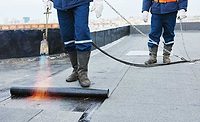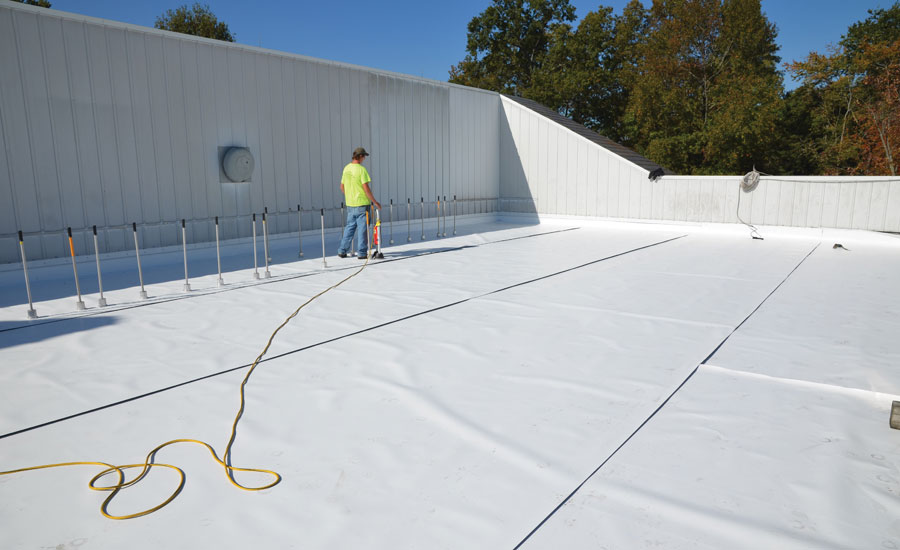Making the Maintenance Move: How to Start, Market and Sell a Roofing Maintenance Business

Photos courtesy of GAF.





Adding maintenance to your company’s offerings may be the missing piece you need to successfully grow your business. The higher profit margins can help improve your overall bottom line and allow for more aggressive project pricing if the opportunity exists. In addition, by going on the customer’s roof every year, you not only box out the competition, but also strengthen your relationship. This opens the door to not only re-roof that existing building, but to land new projects all around.
Now that we agree that adding maintenance is a good idea, here are some tips to help you get the most out of it.
Make the investment. It’s both an investment of time and finances to get into the maintenance business, but it’s well worth it.
- Take time out to really think about what you want your maintenance business to look like, what you want to get out of it, what customers you are targeting and how you plan to get there.
- Make the financial investment. Whether it’s setting up a dedicated team or acquiring vehicles and equipment, it’s important to keep focus and have the necessary resources in place to support this part of the business.
- Have a plan. Before you get started with a maintenance program, make sure you have a business plan.
- Create a business overview, including milestones and financial goals.
- Develop a sales plan to determine your target audience, the offer and how you will sell it.
- Market your plan with a strong message and use the right tools to promote yourself.
- Build a dedicated team. Trying to split time between production and maintenance doesn’t work.
- Have a group specifically focused on maintenance to help you maximize this part of your business.
- Look for people who are experienced, smart, hardworking and completely focused on maintenance.
- Make sure their goals are not only clearly defined and aligned with yours, but measurable so you can ensure your targets are being met.
Maintenance Marketing
Once you set up a program, the next step is to market it. Roof maintenance is a critical part of property ownership and the best way to extend the life of a roof, but in order to sell maintenance services you need to sell yourself.
One way to do this is to create a sell sheet to help promote your business, the company image you’re trying to convey and the benefits you offer. Start off with a description of your company: how long you have been in business, your specialties, if the company is family owned, etc. Use the initial section to paint a favorable picture of your company and how you can help owners maximize the life of their roofs.
Additional points to include:
- That you’re a maintenance professional with any applicable certifications or experience, and that your customer can take advantage of guarantee extensions at no cost.
- Every year throughout the warranty period, you will perform a thorough, preventative maintenance inspection and provide your customer a written report with before and after photos.
- You have a written safety program for your client’s protection and review. This shows that you care about your employees and your customers.
- You will be hands-on and available to meet your customer’s construction schedule and needs.
- List all awards and certificates your company has earned, such as Better Business Bureau or manufacturer designations.
- Show examples of your work through photos, videos or client testimonials.
Once you create a sheet with all of your information, make sure you distribute it to your customers and prospective clients to explain how they can benefit from hiring you as their maintenance professional. The right sell sheet will leave them with little doubt that you’re the right person to trust with their annual roof maintenance.
Start Selling
Finally, it’s time to sell your maintenance services to prospective clients. Most building owners make the wise decision to purchase a comprehensive manufacturer’s warranty to ensure their new roof is protected against leaks. Depending on the system and guarantee, it could add up to 35 years of coverage to the life of the roof. However, a guarantee is only beneficial if regular roof maintenance is performed and recorded. If the property owner doesn’t keep up their end of the agreement, and there’s an issue related to them not maintaining the roof, that issue may not be covered by the guarantee.
Roof maintenance programs pay for themselves in the long run. Explain to an owner that small fixes will cost a fraction over neglecting the roof and shelling out thousands of dollars to pay for significant repairs. In addition, a leak doesn’t just affect the roof. Water damage can affect the building’s interior tile, walls, flooring, furnishings, fixtures, office equipment, inventory and electrical systems. Hidden costs include lost revenues and income, lawsuits, slip and fall accidents, mold problems and employee productivity issues. All of those consequential damages add up and can easily wreck an annual maintenance budget.
Explain the value you will offer to them. Unplanned maintenance can last long and cause service disruptions that distract from their core business. Proactively maintained roofs last an average of 21 years compared to 13 years for reactively maintained roofs. It also saves about 11 cents per square foot a year. More than 80 percent of all roofs are replaced prematurely because of problems that occur before they reach their anticipated lifespan. The maintenance message is very compelling to an owner. By setting up your own program, marketing yourself and selling the benefits, you can enter this space and succeed.
Looking for a reprint of this article?
From high-res PDFs to custom plaques, order your copy today!








